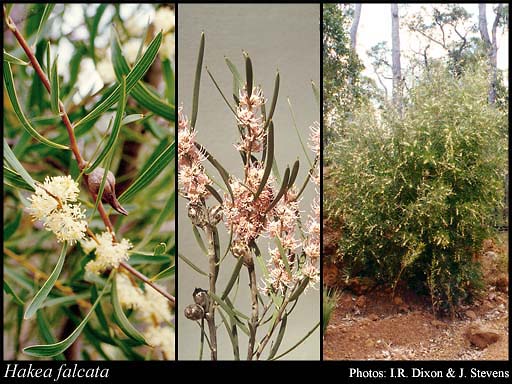- Reference
- Prodr. Suppl. 29 (1830)
- Conservation Code
- Not threatened
- Naturalised Status
- Native to Western Australia
- Name Status
- Current
Erect, loose, non-lignotuberous shrub, 2-4 m high. Fl. white-cream-yellow/white-pink, Sep to Nov. Yellow-grey peaty sand, sandy clay. Winter-wet depressions.







Scientific Description
Shrubs, 2-4 m high; branchlets glabrous or hairy. Leaves alternate, 30-125 mm long, 3-15 mm wide, glabrous; lamina flat, widest around the middle, entire. Inflorescences axillary, cream; pedicels 5-6 mm long. Perianth 3-4.5 mm long, glabrous; ovary glabrous; pistil 4-6.5 mm long, pollen presenter conical, style glabrous. Follicles 20-30 mm long, 7-14 mm wide, corky tetrahedral projections (on external surfaces of fruit) absent; seed 17-20 mm long (including wing), 5-7 mm wide, the wing discontinuous, marginal, extending down one lateral side only. Flowers in September, October or November. Occurs in the South-west (SW) Botanical Province(s), in the Swan Coastal Plain (SWA), Jarrah Forest (JF), Warren (WAR) or Esperance Plains (ESP) IBRA subregion(s).
Distribution
- IBRA Regions
- Esperance Plains, Jarrah Forest, Mallee, Swan Coastal Plain, Warren.
- IBRA Subregions
- Fitzgerald, Perth, Southern Jarrah Forest, Warren, Western Mallee.
- IMCRA Regions
- Leeuwin-Naturaliste.
- Local Government Areas (LGAs)
- Albany, Augusta Margaret River, Busselton, Cranbrook, Denmark, Kent, Manjimup, Nannup, Plantagenet.